Chimney Inspection
The Three Levels of Chimney Inspections
When we think of a fire in the fireplace, it brings to mind images of comfort, warmth and safety. There is little that compares to the relaxing feeling of sitting by a warm fire in the comfort of your home on a cold night. But, as responsible homeowners, we must never take fire safety for granted. Before you use your fireplace, it is critical that you have a chimney inspection so that you can be sure that your chimney is not a fire hazard.
These inspection levels have been classified by the National Fire Protection Agency (NFPA) and they are the standard upon which certified chimney sweeps base their work.
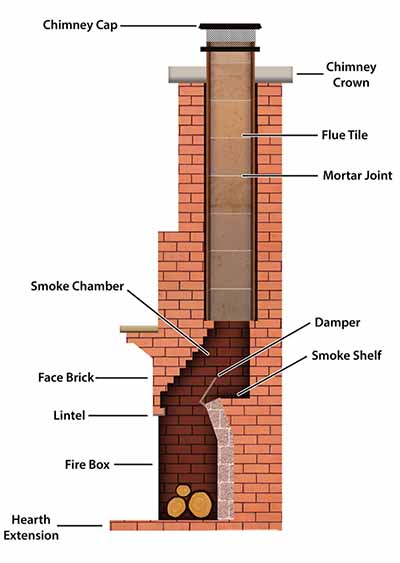
Level 1
A level 1 chimney inspection is the most common type of chimney inspection. If you have used your fireplace regularly in the past without experiencing any problems, a level 1 inspection is appropriate. With a level 1 inspection, the home insoector will examine the readily accessible portions of your chimney. This means the home inspector will perform a visual inspection with a flashlight, examining all areas of your chimney and flue that can be viewed without any special tools. Your technician may use common tools such as a screwdriver or pliers to examine any openings, but there should be no damage to any structures or finishes.
Parts of your chimney that should be examined in a level 1 inspection include:
- Portions of the chimney exterior
- Portions of the chimney interior
- Accessible portions of the appliance and chimney connection
- Interiors & Exterior of vent systems, flues, and chimneys that are readily accessible.
- Roof picth less than 8/12 exterior chimney height accessible from roof.
In short, your home inspector will be examining the chimney to make sure that the basic structure is intact and there are no visible signs of damage. In this inspection, your inspector should also verify that there are no obstructions or combustible materials in your chimney.
Level 2
If you are making any changes in the way you use your chimney, such as changing the type of fuel used, relining the flue, or if you’ve had any accidents or external events that may have caused damage, a level 2 chimney inspection is needed. If you’ve had a building fire, chimney fire or an earthquake, you will need to have a level 2 inspection performed. Also, a level 2 inspection of the chimney is required before you sell your property.
As you probably assumed, a level 2 inspection is more detailed than level 1. A level 2 chimney inspection includes all of the visual examination included in a level 1 inspection, plus some additional work including examination of the attic, crawlspace and other accessible areas. In a level 2 inspection, a video camera or other device may be used to examine the flue and check for cracks or damage to the joints in the chimney’s structure. There should be no removal of the structure or permanent damaged caused to your chimney in a level 2 inspection.
Level 3
The level 3 chimney inspection is the most comprehensive type of chimney inspection. In addition to all of the checks performed in level 1 and level 2 inspections, a level 3 will also examine the concealed areas of the chimney. This inspection may also include the removal of certain parts of the building or chimney structure if necessary. For example, the chimney crown or parts of the interior chimney wall may have to be removed in order to perform the in-depth inspection required for a level 3. This type of inspection is performed when serious damage to the chimney is suspected.
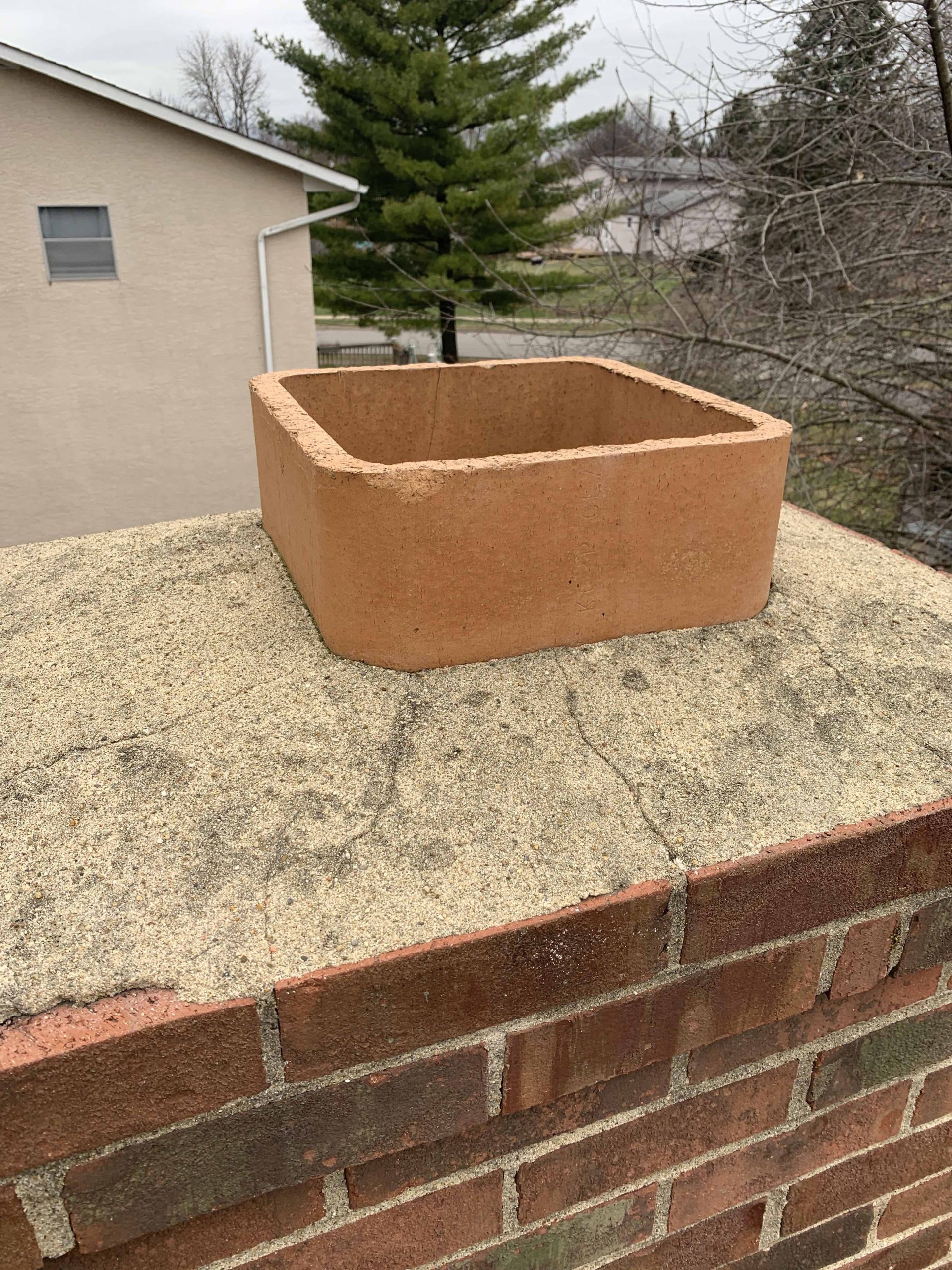
Above: This is what a missing crown / cap looks like
6 Common Chimney Maintenance Tips
Nothing beats enjoying your fireplace on a cold winter night. It’ll keep you warm and looks stunningly beautiful. However, if you don’t follow a few chimney maintenance tips, it might not be safe to use your fireplace. Maintaining your fireplace and chimney is crucial to keeping your home safe when using your fireplace. Without proper attention and cleaning, you’re susceptible to fires and water damage. Plus, you can save money on your energy bills. These 8 chimney maintenance tips will help ensure that your fireplace and chimney are well taken care of and working properly. Don’t worry about anything because Home Inspections LLC is here to help!
1. Have a Functioning Fireplace Damper
Your fireplace damper makes a huge difference in your home’s energy efficiency. When you’re not using your fireplace, the dampers should be closed to keep outside drafts from getting into your home through the chimney. If your damper isn’t closing, it’s going to reflect on your energy bills. It’ll be much harder for your furnace or air conditioner to achieve your desired temperature because they’ll constantly be in battle with the drafts. They’ll end up using more power to heat or cool your home and the price of your electric and heating bills will skyrocket.
When you use your fireplace, the dampers need to be open. If your dampers are broken and can’t open, you can’t use your fireplace. The damper will trap the smoke in your home causing you to breathe in carbon monoxide which is very bad for your health. Having your dampers fixed or replaced when they’re not working properly is crucial. When getting a replacement fireplace damper, make sure it fits properly – it must be snug and not have any gaps.
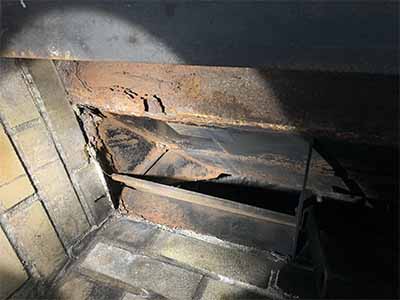
Have a Functioning Fireplace Damper
2. Make Sure your Chimney is Waterproof
Moisture and the elements can be major problems for your chimney. They can weaken the structural integrity of your chimney, cause mold and even damage the walls and floor around your fireplace. You’ll need to make sure your chimney waterproofing, chase cover, crown and flashing are all functioning properly. Start by waterproofing your chimney. Adding a water sealant to the outside of your chimney will prevent moisture from breaking down the bricks and mortar and sneaking into you home.
Obviously there’s a large hole at the top of your chimney which allows smoke to escape. You don’t want to seal that hole but you also don’t want rain and snow from getting into your home. What can you do? For prefabricated chimneys, chase covers are a great addition. It covers the top while still allowing smoke to escape through a small pipe. Most prefabricated chimneys come with galvanized steel chase covers which have a tendency to rust. Replace it with a stainless steel, copper or aluminum chase cover so you don’t have to worry about rust again.
For masonry chimneys, you’ll need to get a crown. It’s a concrete cover that prevents anything from getting into your home. Like chase covers, the smoke escapes through a pipe coming from the crown.The flashing is where the chimney meets the roof. Without a sealant going around the meeting point, moisture can seep into your home. Make sure your flashing is in good condition.
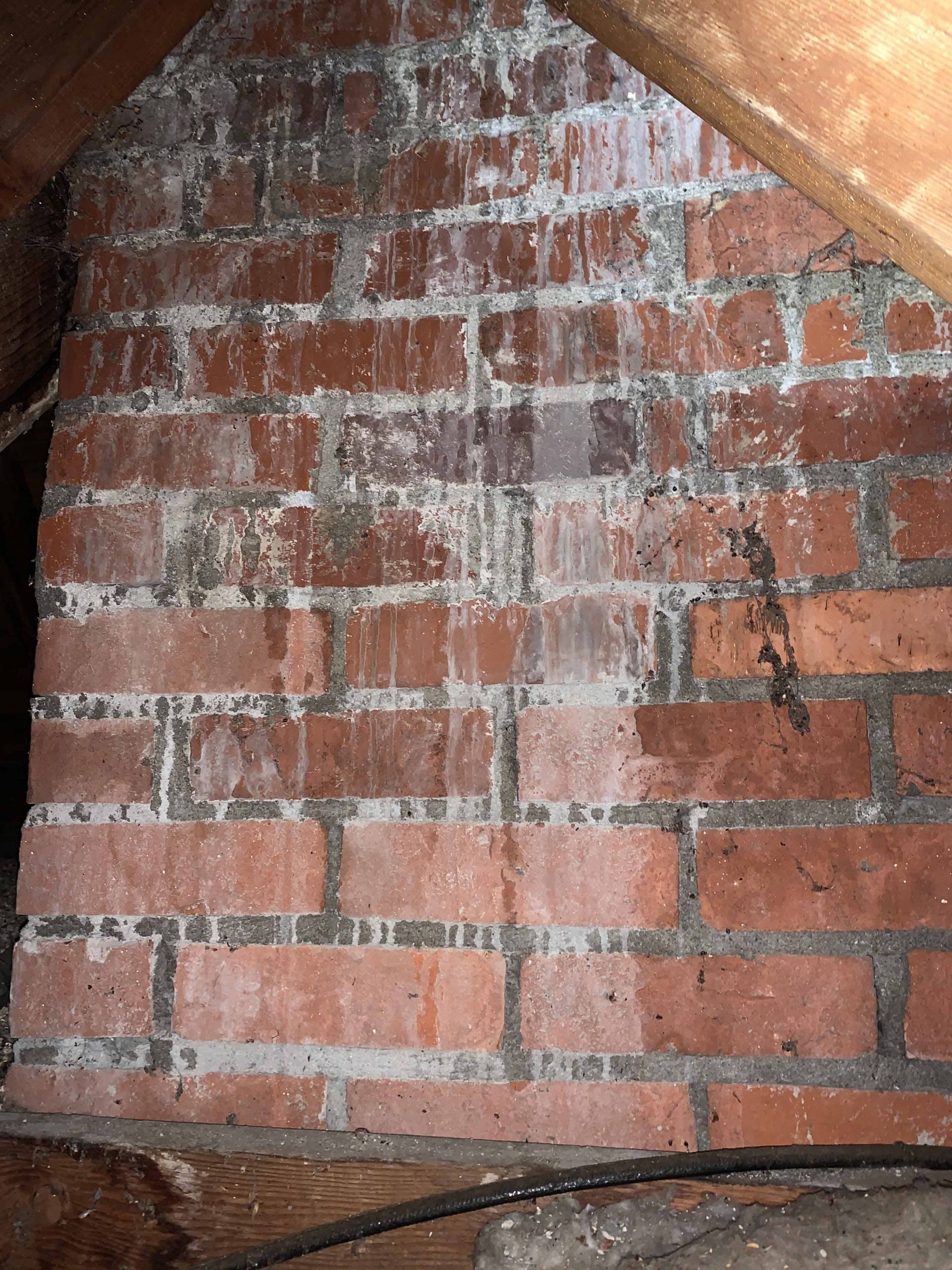
Make Sure your Chimney is Waterproof
3. Know When to Have Your Chimney Swept
No matter what type of fireplace you have, you’ll need your chimney swept in order to keep your home safe. The question is, how often do you need a chimney sweeping? While there’s no specific amount of time to get your chimney cleaned, there are a few things to consider. The amount you use your fireplace will determine how often you have your chimney swept. Once the chimney liner has 1/8″ of soot, it needs to be cleaned.
If you’re not sure how to measure soot, there’s an easy metric you can use – your chimney should be cleaned every 50 burns. This differs from the type of fireplace you have. For instance, a gas log fireplace needs to be swept less often than a wood burning fireplace. About 50 burns is a good place to start.
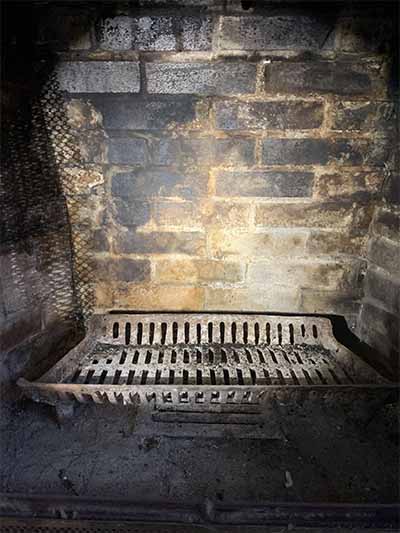
Know when to have a chimney sweep
4. Gas Log Fireplaces Are Better for Your Chimney Than Wood Burning Ones
This is one of the more unique chimney maintenance tips. Replacing a wood burning fireplace with a gas log fireplace could be safer for your home. Gas logs burn much greener than real logs – they produce a less harmful smoke and are extremely energy efficient. In fact, they have a 92%-99% efficiency rating vs the typical 60%-80%.
Not only is that safer for the efficiency, but it’s safe for you. Since the gas log fireplace is burning up to 99% of the gas used, there’s less soot in your chimney. That means you can go longer between chimney sweeps and you’re less at risk of fires. Don’t think you’re sacrificing beauty for efficiency. For a time, gas log fireplaces lacked the elegance of a wood burning fireplace, but things have changed. Now, the hand painted, ceramic gas logs are made to look identical wood logs.
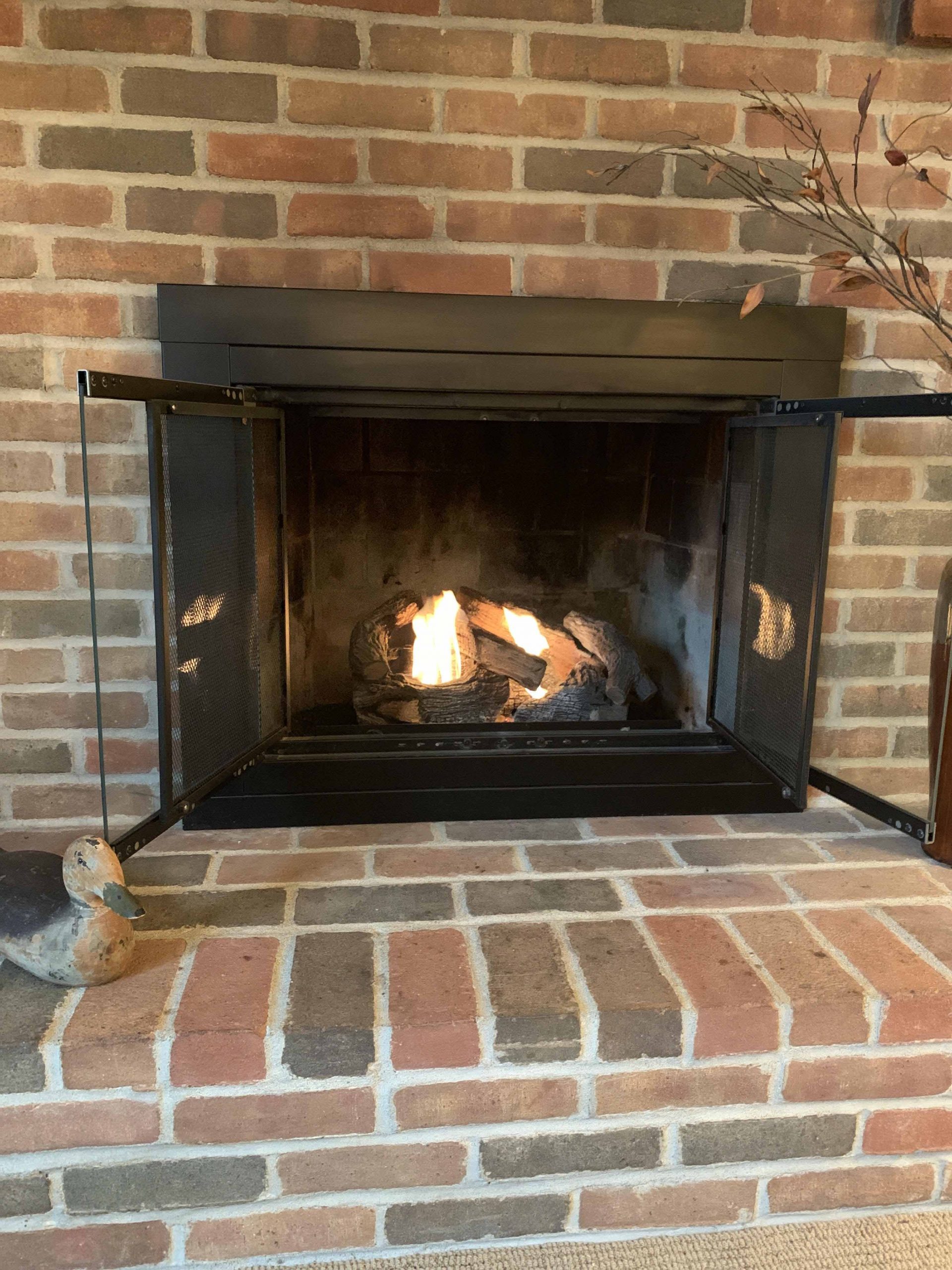
Gas Log Fireplaces Are Better for Your Chimney Than Wood Burning Ones
5. Make Sure Your Mortar Joints and Bricks Aren’t Crumbling
The bricks and mortar joints of your chimney play a crucial role in avoiding water damage inside of your home. However, they begin to crack and crumble over time and give moisture an entrance into your home. Chimney tuckpointing is the act of repairing mortar. If you notice that your mortar is crumbling and the bricks are starting to become loose, then you’re in need of chimney tuckpointing. Make sure you get a waterproofing sealant for your chimney stack. This will help keep the mortar and bricks protected from moisture.
6. Have Your Chimney Inspected Once Per Year
Just looking at your chimney isn’t enough to spot problems – some are underlying and need a professional to find them. Having a chimney inspection once per year is crucial to ensure your chimney’s safety.
There are three levels of chimney inspection to consider:
- Level 1: used for chimneys that seem to be functioning properly. Examines all readily accessible portions
- Level 2: best for homes that are changing how they use their chimney or the heating source. Required before selling a property. Includes everything in a level 1 plus attic, crawlspace and exterior inspections
- Level 3: most in depth inspection. Includes everything in inspection 1 and 2 plus checking more concealed areas. This inspection is for chimneys where there’s a major problem that needs to be addressed
These Chimney Maintenance Tips Will Save You Money and Keep Your Home Safe
There are many different chimney maintenance tips but these are our 6 favorites. They cover everything from minor chimney inspections to completely changing how you use your fireplace.
Home Inspections, LLC offers everything mentioned above – we’re Ohio’s chimney and fireplace experts. We can help you with everything from a chimney sweeping to an entire fireplace and chimney remodel. Get a free quote now and start your project with a company that has been trusted by homeowners in and around Columbus, Ohio.
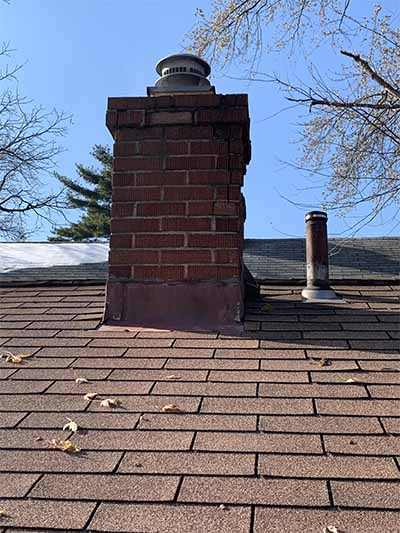
Make Sure Your Mortar Joints and Bricks Aren’t Crumbling
